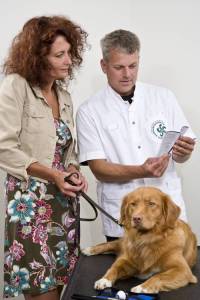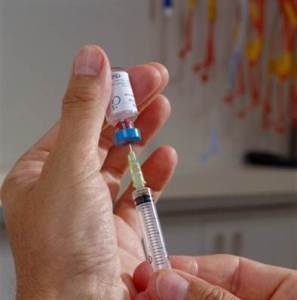
Rabies
A page about canine rabies describing cause, clinical signs, diagnosis and control.

Introduction
Ireland has been free of rabies for many decades. The last case of classical rabies caught in Ireland was in 1903. In 2009, four people in Dublin received rabies vaccination therapy after being bitten by an imported kitten, although subsequent examination of the kitten yielded a negative result for rabies. Rabies is still a serious problem in most countries of the world with the exception of Australia, New Zealand, the Pacific Isles, Scandinavia (excluding Denmark), Iceland, the West Indies and Atlantic Islands. In Europe and the United States, infection persists mainly in wild animals, for example foxes, bats, racoons and wolves, and humans are infected from contact with such animals. In contrast, in India and other Asian/African countries infection commonly occurs in dogs associated with humans.
All rabies susceptible animals entering Ireland are required to spend six months in quarantine, unless of course, they arrive in this country under the Pet Passport (ROI) / Pet Travel Scheme (PETS) (NI). In most countries rabies is, in fact, a notifiable disease and suspect animals must be kept in isolation. Recently however, EU legislation governing these schemes has been relaxed somewhat such that a microchip identified animal, if vaccinated can move to another country in the scheme after a minimum number of weeks weeks set out in local legislation after vaccination. They can then return to Ireland as long as a minimum number of weeks, specified in local legislation, have elapsed since vaccination. For dogs or cats from the Republic of Ireland, it is stated on the Summary of Product Characteristics for Nobivac Rabies that “protective levels of circulating antibody are seen in all species within 30 days of vaccination”, data exist that an adequate serological response (≥0.5 IU) has been demonstrated 2 to 3 weeks after vaccination1. Immunity is reached within 30 days, and in keeping with legislation, travel after 21 days can be entered into the pet passport in the Republic of Ireland or Northern Ireland. A treatment for Echinococcus is required 1-5 days prior to re-entry however. Just as with other EU member states, all dogs going to the UK must now be vaccinated against rabies in advance of travel in accordance with the rules summarised above.
Aetiology
Rabies is caused by a virus – a member of the Rhabdoviridae – an RNA virus called Lyssavirus. The incubation period of rabies varies from nine days to more than a year. The delay in some cases is because the virus has to migrate from the site of initial entry into the body to the spinal cord or the brain.
Epidemiology
Rabies is a zoonotic viral disease which is almost always fatal and can infect all mammals, including humans. Dogs are the main vector for human rabies. Both wild and domesticated animals can act as a natural reservoir for the disease, with human infection normally transmitted from dogs, cats, rodents and wild animals like bats, foxes and skunks. Rabies is transmitted by the bite of an infected animal with high virus concentrations in its saliva.
Clinical Signs
The average length of time for clinical signs to appear is four weeks after infection and can be seen in three phases:
Phase one: Local irritation of the entry site, followed by fever, mild changes in demeanour, behaviour and temperament. Pupils will be dilated and eye reflexes slow. The sound of an animal’s bark or meow may alter.
Phase two: Aggression, lack of co-ordination, disorientation, seizures and fits, increased salivation and photophobia.
Phase three: Paralysis, excessive salivation, respiratory failure, coma and then death.

Diagnosis
Diagnosis can be based on:
- Clinical signs – Clinical signs of disease are characteristic. However, no cases have been detected in Irish animals for many years. This is a notifiable disease and if you suspect an animal has rabies, please contact your local Department of Agriculture office immediately.
- Serology – Analysis of the blood may indicate exposure to rabies (antibodies) if the animal survives long enough to mount an immune response.
- Post mortem examination of the animal can confirm characteristic pathology that can be confirmed by various tests.

Control
It is essential to vaccinate your dog according to your vet’s recommendations. The rabies vaccine is inactivated and can be given with certain other vaccines.There is no specific treatment for rabies, and even suspect cases should be euthanased due to the threat to humans from this disease. The best form of protection against this virus is through vaccination. You’ll be pleased to know that there are some vaccines that offer a duration of immunity of three years. Vaccines may only be prescribed by your veterinary practitioner from whom advice must be sought. For further information on disease and vaccination please click here.
References: 1. 2006, Bergman, J., Fensome, R., Optimal Timing of Sampling and Pass Rates of Two Rabies Vaccines, Proceedings of British Small Animal Veterinary Association Congress, Clinical Research Abstracts
